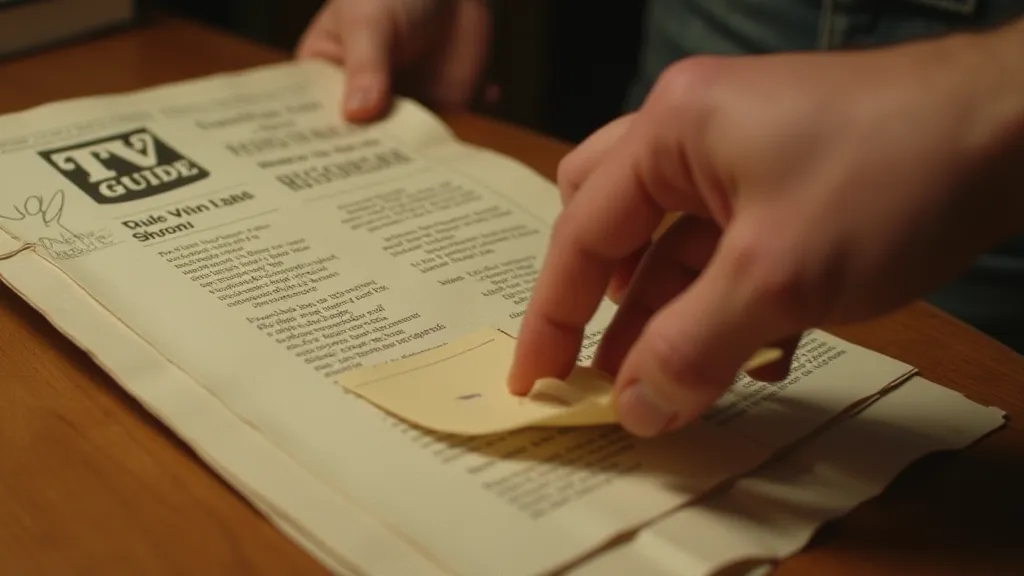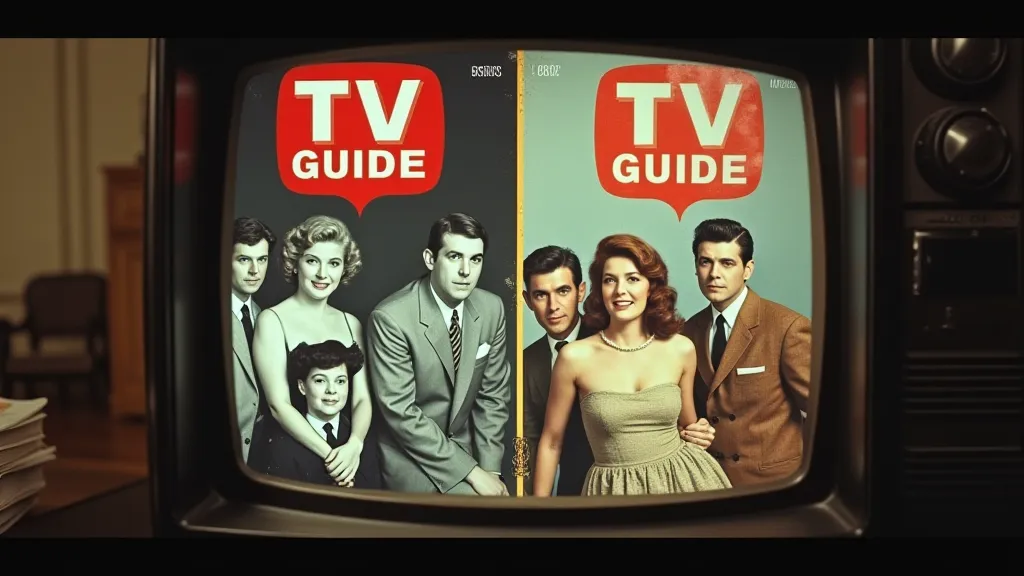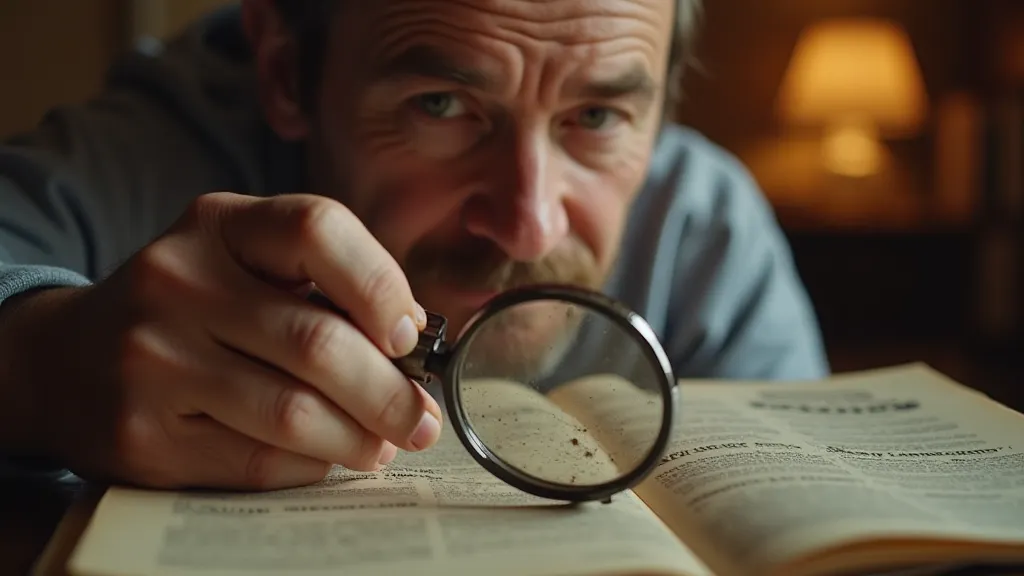Echoes of Laughter: The Evolution of Comedy on Television, as Seen Through Vintage TV Guides
There's a particular scent, isn’t there? That dusty, slightly vanilla aroma clinging to aged paper, whispering of forgotten afternoons and the hypnotic glow of a black-and-white screen. It’s the scent of a vintage TV Guide, and for me, it’s a portal. I remember my grandfather, a man of quiet routines and immeasurable kindness, meticulously pouring over his 1962 TV Guide each Thursday. He's gone now, but the memory—and the paper—remain, anchoring me to a simpler time, a time when humor unfolded slowly, deliberately, and with a distinct, almost innocent charm.
Collecting these relics isn't merely about acquiring printed matter; it's about preserving fragments of a cultural narrative. They’re time capsules, revealing the comedic landscape of decades past, a world vastly different from the rapid-fire, often cynical humor we consume today. My fascination isn't just with the shows listed; it's with how the TV Guide itself reflects the shifting tastes and anxieties of the nation. The meticulous design and layout of these early publications also hold a compelling story, one that deserves closer inspection - a narrative explored further in The Art of the Grid: Deconstructing the Layout and Design of 1960s TV Listings.

The 1950s: Sitcoms and the Era of Innocence
The 1950s TV Guides are particularly illuminating. The comedic styles were remarkably different. Think of "I Love Lucy," a phenomenon that shattered television norms. The humor was largely slapstick, reliant on physical comedy and exaggerated situations. But look closer at the descriptions in the TV Guide – they aren't just listing programs; they’re offering tiny snippets of societal understanding. The focus was on family, traditional roles, and a pervasive sense of optimism, even amidst Cold War anxieties. Shows like "Leave It to Beaver" and "The Honeymooners" reflected, and simultaneously reinforced, these values. The craftsmanship in these early sitcoms, and the care with which they were marketed – evidenced in the TV Guide’s detailed synopses and often charming illustrations – is genuinely impressive. It was an era when television wasn't just entertainment; it was a shared experience, a communal ritual.
Consider the limited color palettes and design aesthetics of the early TV Guides themselves. The typography, the layout, the choice of photographs – everything spoke of a deliberate attempt to create a feeling of wholesome entertainment. Examining a 1953 TV Guide is like peering into a meticulously curated window into American domestic life. The rarity of mint-condition copies from this period contributes to their value, both financially and historically. Many were discarded or lost, making surviving examples treasured artifacts. These early programs often carried subtle, yet powerful, messages about American society—insights that can be further understood by exploring accounts from dedicated collectors in Lost in the Listings: Reconstructing Forgotten Television Programs Through Collector Accounts.
The 1960s: Satire and Social Commentary
The 1960s saw a dramatic shift. The Vietnam War, the Civil Rights Movement, and a burgeoning counterculture began to seep into the nation’s consciousness, and television followed suit. The TV Guides of this decade reflect this turmoil. Shows like "The Dick Van Dyke Show," while still rooted in family sitcom conventions, started to incorporate more sophisticated humor, poking fun at societal norms and featuring more complex characters. The descriptions in the TV Guide began to acknowledge this shift, using language that hinted at a deeper satirical edge. The arrival of shows like "Bewitched" also signalled a move towards a more magical, escapist form of comedy, providing an alternative to the mounting tensions of the era.
The craftsmanship evident in the 1960s TV Guides also differed. While early editions were primarily black and white, color printing became more commonplace, reflecting the increasing presence of color television in American homes. The photographic quality improved, with more candid and intimate portraits of actors and actresses. It's fascinating to compare a 1958 TV Guide with a 1968 edition - the difference in tone and presentation is striking, mirroring the rapid societal changes of that decade. The responsibility of preserving these cultural touchstones, and others like them, falls on the shoulders of dedicated collectors—a theme explored in detail within The Ephemeral Archive: The Responsibility of Collectors in Preserving Television History. These items represent a fleeting glimpse into the past, and their survival is crucial for future generations to understand the evolution of our culture.

The 1970s and Beyond: Fragmentation and Variety
The 1970s represented a fragmentation of comedic styles. The rise of "Saturday Night Live" brought a new wave of irreverent and often politically charged humor to the airwaves. The TV Guides of this period showcase a wider range of programming – from family sitcoms to edgy comedies to animated series. The descriptions became more verbose, attempting to capture the nuance and complexity of the shows. This was also a time when TV Guide subscription history started to become more complex, with various regional editions and promotional offers.
The shift in comedic sensibilities also meant a change in the way TV Guides were designed and marketed. The emphasis moved away from wholesome family imagery toward more edgy and provocative visuals. The language used to describe the shows became more sophisticated and often incorporated slang and pop culture references. The introduction of cable television and the proliferation of networks further complicated the landscape, making it increasingly difficult for TV Guide to remain the definitive source of television listings. The scarcity of certain 1970s and later issues, particularly those featuring short-lived or cult-favorite programs, contributes to their collector value. The subtle messages embedded within these programs also provide a rich source of social commentary - a perspective further illuminated by considering the accounts of those who meticulously documented and preserved them.
Preserving the Legacy: Restoration and Identification
Collecting vintage TV Guides isn't just about possessing an object; it's about safeguarding a piece of cultural history. Proper storage is crucial – keeping them away from direct sunlight, humidity, and pests. Gentle cleaning with a soft cloth can remove surface dust. For more extensive restoration, it's best to consult with a professional paper conservator. Identifying the rarity and value of a TV Guide requires careful examination – noting the issue date, regional edition, cover artwork, and overall condition.
There’s a satisfying ritual to handling these aged publications—the crispness of the paper, the faint aroma of nostalgia, the silent echoes of laughter from decades past. They’re more than just listings; they’re windows into a vanished era, a testament to the enduring power of laughter, and a tangible connection to our shared cultural heritage. The care and attention to detail in early television and its marketing, meticulously documented in these vintage TV Guides, serves as a powerful reminder of a time when entertainment was a more deliberate and communal experience. Furthermore, understanding the social context and underlying messages within these programs requires a deeper appreciation for the era—a perspective enriched by considering accounts from dedicated collectors striving to piece together the fragmented stories of forgotten television programs. The value of these artifacts extends far beyond their monetary worth; they represent a vital link to our past, a testament to the power of storytelling, and a reminder of the shared experiences that have shaped our culture. The subtle shifts in comedic styles and the evolving societal norms are all reflected in the pages of these time capsules—a legacy worthy of preservation and continued exploration.






